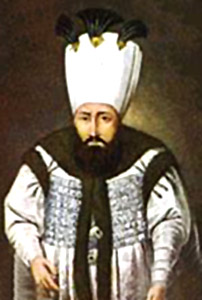 The volume, the capacity and the size of armies in the middle ages was a major governing factor in the art of warfare during that period.. According to Al Utbi, Jaipala, the Raja of Bhathindah (present day Bhatinda, in Punjab), had marshalled a force comprising 30,000 foot, 12,000 horse and 300 elephants against Mahmud in 1001 A.D. It is also known that in 1019 A.D. the Candella king Ganda was ready to face Mahmud with an army comprising 36,000 horses, 1,45,000 foot and 390 elephants.
The volume, the capacity and the size of armies in the middle ages was a major governing factor in the art of warfare during that period.. According to Al Utbi, Jaipala, the Raja of Bhathindah (present day Bhatinda, in Punjab), had marshalled a force comprising 30,000 foot, 12,000 horse and 300 elephants against Mahmud in 1001 A.D. It is also known that in 1019 A.D. the Candella king Ganda was ready to face Mahmud with an army comprising 36,000 horses, 1,45,000 foot and 390 elephants.
The size of armies during middle ages varied and the then literature and the historical records unfold this fact. The Lalita-vigraharaja drama makes one believe that on one occasion, the army of Vigraharaja Cahamana comprised a hundred thousand horses, a thousand elephants and a million men. The tradition contained in the Kharatara-gaccha-gurvavali reveals that Prthviraja Cahamana possesses 70,000 horses. But Muslim sources render a different account. It is said that in the first battle of Tarain (A.D. 1191) Prthviraja Cahamana`s army amounted to 200,000 horsemen and 3,000 elephants, besides countless infantrymen. On the eve of the second battle of Tarain (A.D. 1192), his army comprised 300,000 horses, 3,000 elephants and a considerable infantry. These accounts of armies and shrewd art of warfare during Middle Ages, are in some cases regarded as contradictory by historians. But it is a must to take into consideration the fact that they were composed of the forces of a number of samantas. For instance, the vast army of Prithviraja Cahamana was made up of the forces of one hundred fifty tributary kings and chiefs who had assembled for his help in the second battle of Tarain.



















